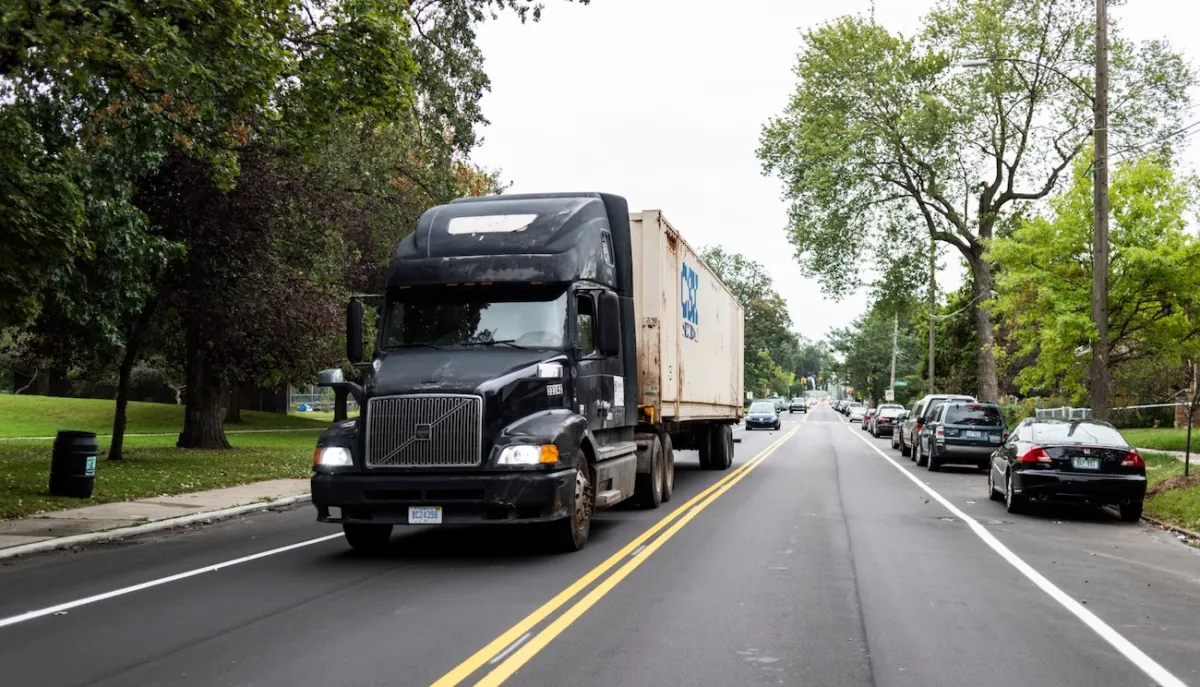Peak-hour traffic can significantly affect trucking efficiency, especially in busy areas like Smyrna. Trucks, with their large sizes and slow acceleration, often face delays when navigating congested streets during rush hour. This reduction in efficiency can lead to late deliveries, increased fuel consumption, and higher operational costs. For trucking companies, peak-hour traffic poses both logistical and financial challenges that demand careful planning.
In addition to logistical hurdles, the stop-and-go nature of peak-hour traffic increases the risk of accidents. Truck drivers must remain vigilant during these times to avoid collisions with smaller vehicles, cyclists, and pedestrians, as the chances of accidents are heightened in congested conditions. Planning routes to avoid high-traffic areas or scheduling deliveries during off-peak hours can help mitigate these risks. Investing in driver training focused on defensive driving during heavy traffic can also enhance safety and efficiency.
Increased Fuel Consumption During Peak-Hour Traffic
One of the most noticeable impacts of peak-hour traffic on trucking efficiency is the increase in fuel consumption. Trucks are designed to be most fuel-efficient when cruising at a steady speed. However, during rush hour, constant stops and slow speeds force trucks to use more fuel. This not only increases fuel expenses but also adds to the overall carbon footprint of the trucking industry.
Some trucking companies plan routes that avoid peak traffic times or opt for fuel-efficient driving practices to mitigate these challenges. While these solutions may not eliminate the problem entirely, they can help reduce fuel waste and associated costs. Additionally, incorporating real-time traffic data into route planning can further optimize fuel efficiency by helping drivers avoid the most congested areas. Adopting more aerodynamic truck designs and implementing regular vehicle maintenance can also contribute to improved fuel efficiency in heavy traffic conditions.
Delivery Delays and Time Management Challenges
Peak-hour traffic often results in delivery delays, which can affect both trucking companies and their clients. Late deliveries disrupt schedules, create dissatisfied customers, and potentially lead to lost business. For truck drivers, this adds pressure to meet tight delivery windows despite facing heavy traffic, increasing stress, and the potential for errors.
Effective time management becomes crucial for truckers operating in areas prone to peak-hour congestion. Many companies implement scheduling tools to better plan deliveries around traffic patterns, but the unpredictability of rush hour remains a constant concern. In some cases, truckers may have to navigate driving-hour regulations, which further complicate time management during delays. Building extra time into delivery schedules and maintaining open communication with clients can help alleviate some of the challenges caused by unpredictable traffic conditions.
Safety Concerns and Accident Risks
Navigating peak-hour traffic presents safety risks for truck drivers and other road users. Trucks require longer stopping distances than cars, and during rush hour, sudden stops are frequent. The likelihood of rear-end collisions increases, especially when smaller vehicles cut in front of trucks, leading to dangerous situations.
Accidents involving large trucks can be devastating due to the size and weight of the vehicles. In cases of accidents, involving big rig crash attorneys can be crucial to ensure that all parties involved understand their rights and responsibilities. These legal experts specialize in handling cases where truck accidents result in serious injury or property damage.
Impact on Driver Fatigue and Stress
Peak-hour traffic can also contribute to driver fatigue and stress, which negatively impacts trucking efficiency. Long hours spent in stop-and-go traffic can wear down even the most experienced drivers, making it harder for them to stay alert and focused. Driver fatigue is a leading cause of accidents in the trucking industry, and congested roads only exacerbate this issue.
To combat these risks, trucking companies must prioritize driver well-being. Ensuring that drivers take regular breaks and providing support for mental health can help reduce the strain caused by heavy traffic.
Increased Wear and Tear on Trucks
Trucks that regularly operate during peak-hour traffic experience more wear and tear than those that travel during off-peak hours. Frequent braking, idling, and slow-moving traffic put additional stress on critical components such as the brakes, tires, and transmission. Over time, this leads to higher maintenance costs and potentially more frequent repairs.
Implementing a rigorous maintenance schedule is essential for trucking companies that operate in traffic-heavy areas. Routine checks on brakes, tires, and other systems can prevent breakdowns and keep trucks running efficiently despite the added strain of peak-hour conditions. In addition, investing in high-quality, durable parts can help mitigate the effects of constant stop-and-go traffic. Proactively replacing worn components before they fail can also reduce downtime and prevent costly roadside repairs.
Strategic Route Planning to Improve Efficiency
One way to minimize the impact of peak-hour traffic on trucking efficiency is through strategic route planning. By using traffic data and GPS technologies, trucking companies can find alternative routes that bypass the worst congestion. While avoiding peak-hour traffic entirely may not be possible, advanced planning can significantly reduce delays and improve overall efficiency.
Moreover, some companies consider nighttime deliveries or scheduling trucks to operate during less congested periods. Although this may require logistical adjustments, it can reduce the impact of peak-hour traffic on productivity and profitability. Incorporating real-time traffic updates into route planning allows drivers to adjust on the go, further enhancing efficiency. Also, collaborating with clients to offer flexible delivery windows can provide more opportunities to avoid peak traffic times.
Also Read: Advocating For Justice In Personal Injury Cases
Solutions for Reducing Peak-Hour Traffic Impact
Trucking companies in Smyrna and other busy areas are exploring various solutions to address the challenges posed by peak-hour traffic. These include using technology to monitor traffic patterns, investing in fuel-efficient trucks, and offering incentives to drivers for fuel-saving behaviors. Some companies are also experimenting with staggered delivery schedules to reduce the number of trucks on the road during rush hour.
By implementing these strategies, trucking companies can alleviate some of the issues caused by peak-hour traffic, improve efficiency, and enhance safety on the road. Moreover, collaborating with local authorities to create designated truck lanes or delivery zones during peak hours can help streamline traffic flow. Leveraging route optimization software can further ensure that trucks take the most efficient paths, minimizing delays and reducing operational costs.
Peak-hour traffic causing delivery delays? Discover time management tips and strategic route planning at Alevemente!




